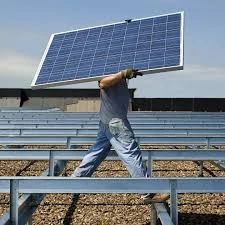tie grid inverter
The Rise of Tie Grid Inverters Powering Sustainable Energy Solutions
In recent years, the global push towards renewable energy has led to significant advancements in solar technology, particularly in the development of tie grid inverters. These devices play a crucial role in the efficient use of solar energy, making them an essential component in the transition to sustainable power solutions.
A tie grid inverter, also known as a grid-tie inverter, is a device that converts direct current (DC) generated by solar panels into alternating current (AC) that can be fed into the electrical grid
. Unlike standalone systems, which operate independently and require battery storage, tie grid inverters are designed to synchronize with the grid. This means that excess power generated during peak sunlight hours can be sent back to the grid, allowing homeowners and businesses to benefit from net metering, where they are compensated for the energy they contribute.One of the primary advantages of tie grid inverters is their efficiency. Modern inverters come equipped with advanced technology that ensures optimal energy conversion rates. The higher the efficiency, the more electricity can be generated from a given amount of sunlight, which translates into lower energy bills and a reduced carbon footprint. Furthermore, advancements in inverter technology, such as Maximum Power Point Tracking (MPPT), ensure that the system continuously operates at peak performance, adjusting to variations in sunlight and temperature.
tie grid inverter

Another significant benefit of grid-tied systems is their lower upfront cost compared to off-grid systems. Since they do not require batteries, which can be one of the most expensive components of solar installations, consumers find grid-tie systems more accessible and economically viable. Additionally, this affordability encourages wider adoption of solar power, contributing to a more significant impact on reducing reliance on fossil fuels.
Grid-tie inverters also contribute to the stability and reliability of the electricity grid. By integrating solar power generation with the grid, these systems help distribute energy more effectively, reducing the strain on traditional power plants, especially during peak demand times. This is particularly important as more renewable energy sources are integrated into the grid, helping to achieve energy independence and security.
However, it’s essential to acknowledge the limitations of tie grid inverters. They do not provide power during grid outages, which can be a significant drawback for those living in areas prone to electrical interruptions. To address this, some homeowners opt for hybrid systems that combine tie grid inverters with battery storage solutions, ensuring they have access to power when needed.
In conclusion, tie grid inverters represent a pivotal technology in the renewable energy landscape. Their ability to efficiently convert solar energy into usable electricity while facilitating the integration of renewable resources into the grid makes them essential for sustainable energy development. As technology continues to advance, tie grid inverters will likely become even more efficient and accessible, paving the way for a cleaner and more sustainable future. With growing awareness and support for solar energy, the tie grid inverter stands out as a cornerstone in the quest for sustainable power solutions.
-
String Solar Inverter: The High-Efficiency Solution for Smart Solar EnergyNewsJul.14,2025
-
Revolutionizing Rooftop Energy with the Power of the Micro Solar InverterNewsJul.14,2025
-
Power Independence with Smart Off Grid Solar Inverter SolutionsNewsJul.14,2025
-
On Grid Solar Inverter: Powering the Future with Smart Grid IntegrationNewsJul.14,2025
-
Monocrystalline Solar Panels: High-Efficiency Power for the Future of Clean EnergyNewsJul.14,2025
-
Bifacial Solar Panel: A Smarter Investment for Next-Generation Energy SystemsNewsJul.14,2025







